Turquoise has always been considered an American gem. It is highly treasured and sought after throughout the United States. Unfortunately, buyers must be aware that there are many fakes in the market being passed off as authentic turquoise. For that reason, it is important to know where to go to buy the real deal. It is also important to understand how to establish a reasonable asking price when selling turquoise.
Collecting Turquoise
Look for matrix. Genuine turquoise has strands of dark minerals that run through it referred to as its matrix. These can be golden yellow, light brown or even black in nature but they are obviously a part of the stone. A golden matrix indicates the presence of a mineral called rhyolite. A brown matrix indicates iron oxide. The more common black matrix indicates iron pyrite. Oddly enough, while matrix may be considered undesirable in some collectible gems, that is not the case with turquoise.
Look for porosity. Genuine turquoise is very porous. An epoxy resin is often used to stabilize the stone. The process locks in the stone’s natural color and provides it with some protection against damage.
Check the softness of the stone. Turquoise is a relatively soft stone, coming in only around a five or six on the Mohs Scale of Hardness. Many of the stones used to “fake” turquoise are much harder in nature. It is important to make certain that the turquoise collected is genuine.
Avoid reconstituted turquoise. This term is used to describe an inferior quality of turquoise chips that have been mixed with resin to create a stone. Some dealers will attempt to pass off reconstituted turquoise at genuine turquoise prices. Unfortunately, reconstituted turquoise has very little collectible value.
Collect different colors of turquoise. Depending upon the location where it is mined and the other minerals found there, turquoise can skew either blue or green. In rare instances, both colors may be present. Most people are more familiar with the robin’s egg blue turquoise. However, turquoise comes in lighter as well as deeper shades. Green turquoise can also range in color from a bright almost lime green to a deep teal or even olive color.
Purchase turquoise in areas where it is mined. Certain areas, where turquoise is mined, have an abundance of reputable dealers. Arizona and New Mexico are great resource states for the gem.
Purchase some turquoise from Native American dealers. Many tribes work with turquoise in making the most exquisite handcrafted jewelry. These products are highly prized in the marketplace.
Authenticate all turquoise purchases. Make sure that the documentation spells out from which mine the stone was found as well as outlines any treatments that may have been given to enhance the color of the stone.
Take caution in buying turquoise in general department stores. It is usually either highly treated or fake. These are not the type of pieces to add to a turquoise collection.
Check out the dealer from whom you are buying the stone. If the company has a good reputation, chances are you will receive authentic products. For example, a major seller of turquoise in the U.S. is Jay King’s Mine Finds, which is retailed on the Home Shopping Network. King authenticates every piece of turquoise that it sells and lets the buyer know the name of the originating mine. This kind of authentication can be important at the time of sale.
Look for different types of settings. Turquoise is commonly set in silver. However, over the past few years, some jewelers have experimented with setting it in gold as well. It is also sometimes set in copper, bronze and pewter. Vary the types of pieces in the collection.
Selling Turquoise
Take care of the turquoise. If you want to garner a great price, make certain that the pieces have been taken care of over the years. Clean the stones when needed and store them properly. Most turquoise can be easily cleaned with nothing more than a damp cloth or a bit of toothpaste and a very soft toothbrush. Rinse cautiously with water and pat dry with a soft cloth. Don't leave turquoise out in the open air. Store it in a dry, clean jewelry box or in soft cloth or velvet pouches.
Price turquoise for sale according to its color type, size and setting.
Recognize that certain colors of turquoise are of greater value than others. Robin’s egg blue turquoise is the most sought after turquoise color. If it also happens to have little or no matrix, and that further ups the ante. Brighter blue or green stones are of more value than sister stones that are dull and lifeless. Non-treated turquoise can be priced higher than treated stones in some instances. A lot, however, depends upon the buyer. Check the matrix of the stone. Many buyers believe that all authentic turquoise has some kind of matrix. Those individuals will seldom consider purchasing turquoise without a matrix.
Turquoise that comes from certain mines can also garner higher prices. Stones from the Sleeping Beauty Mine usually bring the best price of all.
Measure the size of the stone. The larger the turquoise piece, the higher you can set the price. Large pieces of turquoise can garner a great deal of money. Small stones, on the other hand, can pull a much lower amount of money.
Authenticate the setting. Turquoise set in gold will pull in more dollars because of the setting. Turquoise set in silver can still garner good prices, particularly if the setting is handcrafted and Native American in design.
Determine the age of the turquoise. Some dealers and other buyers are willing to pay a high price for older turquoise if one can authenticate the age.
Try selling to turquoise dealers. Those that deal in the gem have a better understanding of its value. For that reason, they are more likely to offer a reasonable price for the gem, no matter its setting. They may reset the stone into something new or sell it on its own to collectors.
Contact turquoise collectors. These individuals frequent auctions and some even list themselves online. Again, because these people understand the value of turquoise, they are often willing to offer a reasonable price.
Sell turquoise online through auction sites like Things We Buy or Jewelry Way. See the Resources section below for links. Collectors and dealers frequent such sites looking for turquoise pieces.
Put your turquoise in consignment stores. People that frequent those stores are often looking for something out of the ordinary and are willing to pay premium price. Antique consignment stores are the best places to sell such pieces.
Related Articles

Kunzite Pricing Guide

How to Clean Sterling & Turquoise ...
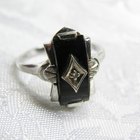
What Is Marcasite Jewelry?

What Does Fake Gold Look Like?

What Is Stainless Steel Jewelry?
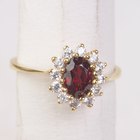
Physical Characteristics of the Ruby ...
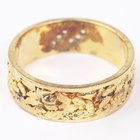
How Can I Test Rose Gold?
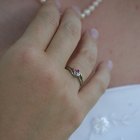
The Value of Mikimoto Pearls

How to Spot a Fake Cameo

What Is White Buffalo Turquoise?
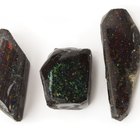
Which Types of Gems Are Most Expensive?

What Is the Difference in K and KT in ...

How to Clean Amber & Silver Jewelry

How to Buy Diamond Jewelry in Cambodia
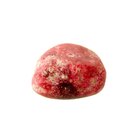
How to Identify Red Jasper
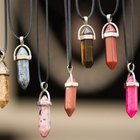
Types of Coral Jewelry

How to Identify a Counterfeit Gucci ...

Tanzanite Vs. Diamonds
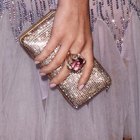
How to Tell If a Gem Is a Kunzite?
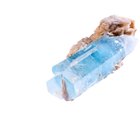
List of the Types of Semi-Precious ...
Writer Bio
A business and education specialist for 30 years, Chantel Alise also owned a management and marketing training company. She has written newsletters and training manuals as well as business articles for Enid News and Eagle's Business Journal. She is principle writer for Beauty Biz. Alsie attended Thomas Nelson Community College (Virginia) and Phillips University (Oklahoma).